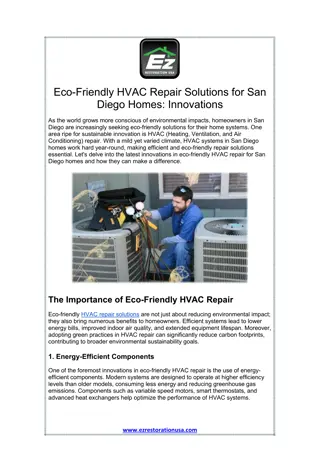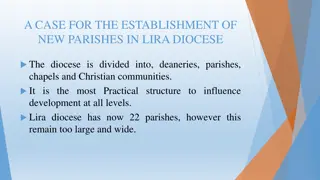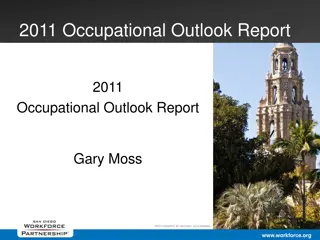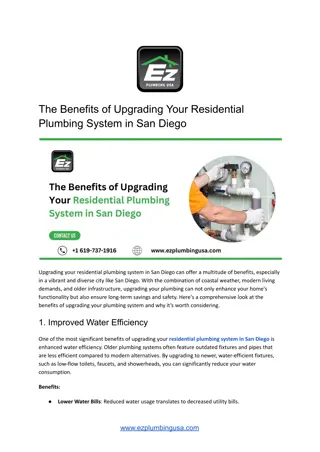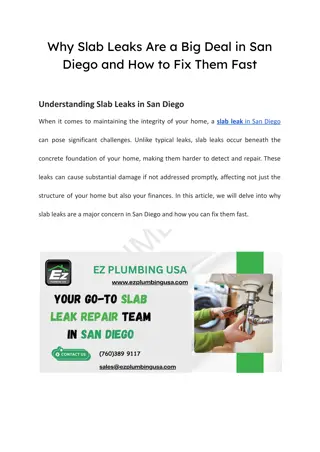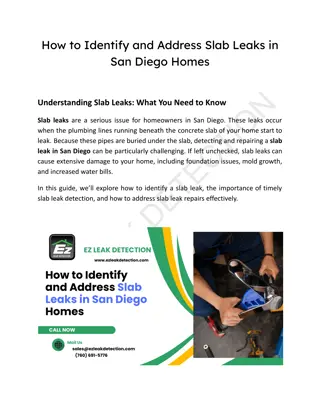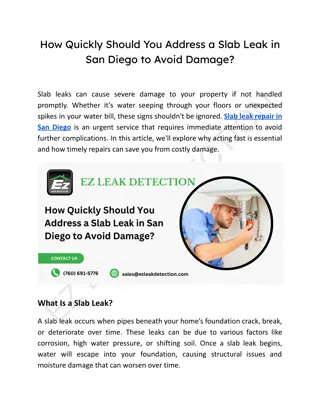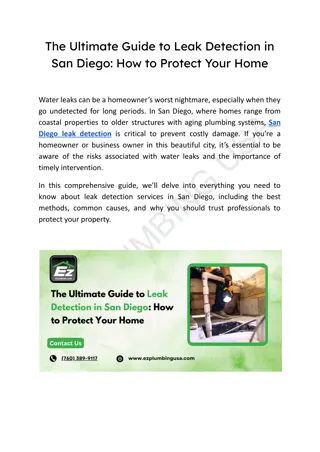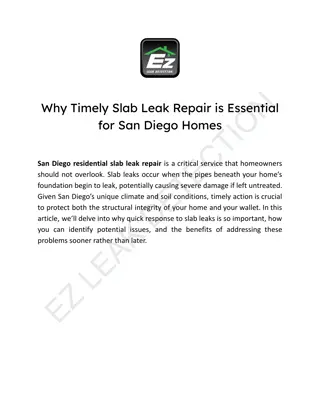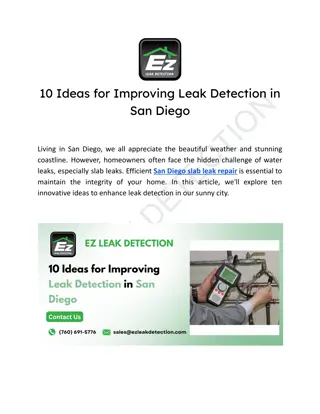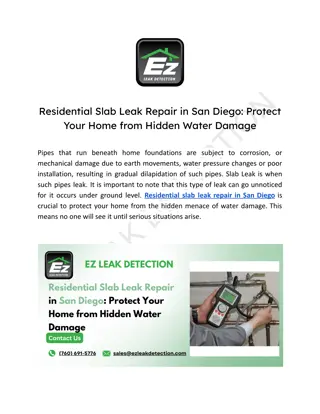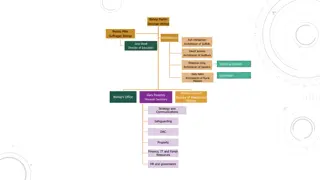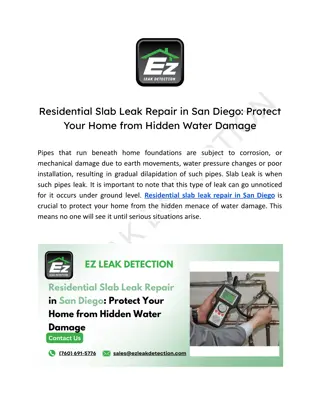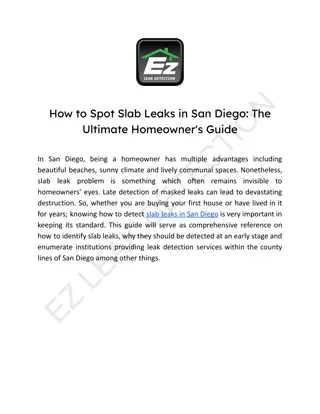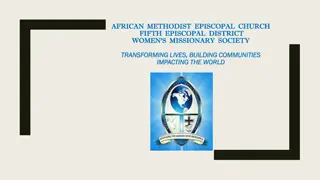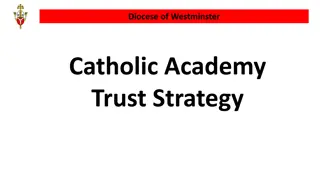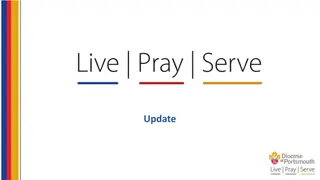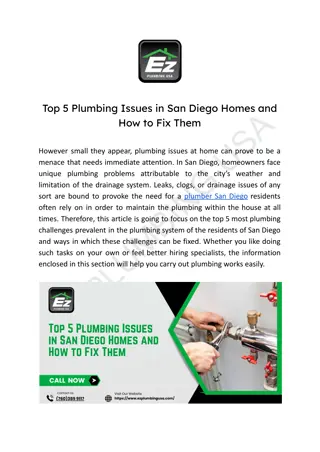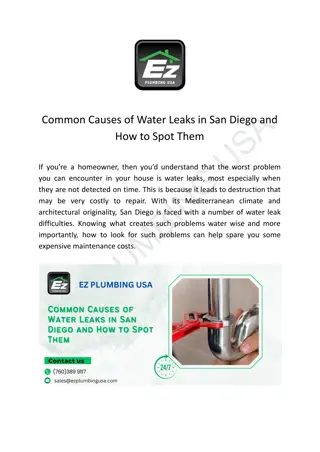The Episcopal Diocese of San Diego
Key aspects of church finance and administration, including cash vs. accrual accounting, financial statement analysis, and budget variances. Learn how to read financial statements and ask important questions to ensure financial transparency and accountability within congregations.
Download Presentation

Please find below an Image/Link to download the presentation.
The content on the website is provided AS IS for your information and personal use only. It may not be sold, licensed, or shared on other websites without obtaining consent from the author.If you encounter any issues during the download, it is possible that the publisher has removed the file from their server.
You are allowed to download the files provided on this website for personal or commercial use, subject to the condition that they are used lawfully. All files are the property of their respective owners.
The content on the website is provided AS IS for your information and personal use only. It may not be sold, licensed, or shared on other websites without obtaining consent from the author.
E N D
Presentation Transcript
The Episcopal Diocese of San Diego Vestry Training January 31, 2015 Top Ten Things You Need to Know about Church Finance and Administration Presented by Julie Young Treasurer and Canon for Finance and Administration
#10 How to Read a Financial Statement
Accounting: Cash vs Accrual Cash: Income is recorded/dated when it is received and expenses are recorded/dated when they are paid Accrual: Income is recorded/dated when it is earned and expenses are recorded/dated when it is incurred Both are acceptable methods for use by congregations. If cash accounting is used, it is recommended that all unpaid bills should be recorded as a liabilities at the end of the year. (Business Manual p. i-4)
Accounting: Cash vs Accrual Cash: Income is recorded/dated when it is received and expenses are recorded/dated when they are paid Accrual: Income is recorded/dated when it is earned and expenses are recorded/dated when it is incurred Both are acceptable methods for use by congregations. If cash accounting is used, it is recommended that all unpaid bills should be recorded as a liabilities at the end of the year. (Business Manual p. i-4)
Financial Statements Statement of Activities (also known as Income Statement or Profit & Loss (P &L) Statement Balance Sheet Cash Flow Statement
Ask Questions Ask whether books are kept on a cash or accrual basis Ask whether all bills and expenses have been recorded Ask if all the current bills and expenses have been paid Ask about major variances from budget
Statement of Activities Income Statement February 2015 February Year to Date Budget Actual Budget Actual Variance Revenue Pledge Plate 5,100 349 5,000 500 11,123 795 10,000 1,000 1,123 -205 Other Total 25 100 53 200 -147 771 5,474 5,600 11,971 11,200 Expenses Personnel Liturgy Office 4,000 250 4,000 400 200 8,000 599 315 8,000 800 400 0 201 85 99 Maintenance Total 1,000 5,349 750 3,523 12,437 1,500 10,700 -2,023 -1,737 5,350 Net Income (Loss) 125 250 -466 500 -966
Statement of Financial Position Three Components: Assets: Bank and Investment Accounts, Property, Accounts Receivable Liabilities: Mortgages, Payables Net Worth/Net Assets Assets - Liabilities = Net Worth/Net Assets
Statement of Financial Position, cont d NET ASSETS Categories Permanently Restricted: Funds restricted by donors in perpetuity. Commonly known as endowments Earnings from endowments are considered temporarily restricted Temporarily Restricted: Funds that are donor restricted for a specific use or for a specific time
Statement of Financial Position cont d. Unrestricted Net Assets Designated: Funds that the vestry has set restricted for a certain use Designated funds can be permanently or temporarily restricted funds Example of temporarily restricted: Property reserve Permanently restricted: Quasi-endowment Designated restrictions can be changed by vestry vote Unrestricted: Assets that have no restrictions put on them.
Balance Sheet February 28, 2015 Cash and Investments Net Assets Checking $3,330 Temporarily Restricted Investments $12,000 ECW $4,569 Total Current Assets $15,330 Building Fund $23,599 Altar Guild $2,359 Fixed Assets Earnings on Endowment $599 Church Building $325,000 Total Temporarily Restricted $31,126 Church Land $250,000 Furnishings $49,231 Permanently Restricted Endowment $10,000 Less Accumulated Depreciation $32,000 Total Fixed Assets $592,231 Unrestricted $441,435 Total Total Net Assets $482,561 Total Assets $607,561 Liabilities Note payable on church $125,000
#9 Make sure you have adequate insurance Susan Ward <susanward961@sbcglobal.net>
Insurance Recommended Commercial Package: Insure for replacement value of property Comprehensive General Liability Employees Benefits Liability Medical Payments Sexual Misconduct: Hired and Non-owned auto:
Minimum Insurance, Cont Directors and Officers (D & O) Umbrella Policy: Provides excess coverage Worker s Comp Church Insurance Agency is required for missions and recommended for parishes
#8 Property needs more than routine maintenance Recommend a physical property evaluation and establish a property reserve
Replacement Reserve Schedule Year 1 Year 2 Year 3 Year 4 Roof 10000 Furnace 5000 Organ restoration 4000 Reserve payment 4750 4750 4750 4750 End of year balance 4750 4500 5250 0
#7 Comply with Employment Law and Canons
Classification of Employees and Other Employees Exempt Non-Exempt Independent Contractors
Payroll and other compensation Exempt Employees: Paid by the job and not by the hour Must be paid more than 37,440 per year This CANNOT be prorated for part time employees Must be managerial or other specialized skills
Employees, etc Non-exempt Minimum wage in California $9.00 per hour Paid by the hour: MUST turn in a timesheet and be paid according to that time sheet, stipends or salaries not legal Must be paid overtime for more than 8 hours per day or 40 hours per week CANNOT volunteer in the same capacity as they are paid Comp time is not allowed Sextons and organists typically should be non- exempt
Employees, etc Independent Contractors Have control over how they deliver the job Request Certificate of Insurance naming church as additionally insured, W-9, and (if applicable), copy of license Have a written contract specifying scope, pay and term Provide 1099 at the end of the year that includes gross payment to contractor if total payments exceed $600
# 6 Use a Payroll Service Do you really want to worry about making sure W2 s and Form 941 s are filed? Do you really want the potential liability of unpaid payroll taxes? Missions are required to use a diocesan approved payroll service!
#5 Safeguard Gods People Make sure background checks are conducted all clergy, employees and key volunteers Make sure online Safeguarding God s People is completed by key volunteers and employees
#4 Keep Current Denominational Health Plan Lay Pension Plan Unemployment Insurance State Disability Insurance
Denominational Health Plan Missions are required to offer the diocesan parity; diocesan plan is available on the website Parishes were required to approve their plan in keeping with the guidelines passed at last years convention. The approved plan was to have been submitted to the diocese by November 30, 2012 some have not yet!
Lay Pension Plan A pension plan must be offered to all lay employees who work greater than 1,000 hours per year. Implementation date: January 1, 2013 or sooner If a defined benefit plan, employer contribution must be at least 9 % of employees compensation If defined contribution plan employer must contribute at least 5 % and match at least 4% of employee contribution
Lay Pension Plan, continued Unlike the DHP which allows thrift shops and schools to be excluded, lay pension plan applies to all employees of a church or institution under the authority of the church However, schools are allowed a transitional period
Lay Pension Plan Extended Phase-In Schedule of Employer Contributions for Schools Only Required As of Base Contribution Match Contribution January 1, 2013 0% 0% January 1, 2014 1% 0% January 1, 2015 2% 1% January 1, 2016 3% 2% January 1, 2017 4% 3% January 1, 2018 5% 4%
Unemployment and Disability Church employers are exempt from participation in State Unemployment and Disability Insurance Programs Church employers may elect to participate in both programs cannot opt into one program only Employer pays for unemployment insurance Employee pays for disability Missions are required to offer to employees
#3 Clergy Discretionary Fund Canon III.9 provides that the loose offering at one Sunday a month is designated for the rector s discretionary fund. Others can make contributions to the fund as well. Generally recognized that fund is to be used for pious and charitable uses consistent with the church mission Cannot be used for personal use or gifts
Accounting for Discretionary Fund Two Methods All gifts made to the fund and all expenditures from the fund are handled from the church operating account Or vestry may approve a separate account. All gifts to the fund are deposited in the general account and then transferred into discretionary account Bank statements are sent to someone other than the rector who should verify that deposits and review checks written against backup material provided. Cash Disbursements are discouraged Subject to audit
# 2 Internal Controls Goal: to prevent or identify errors as well as potential misuse of funds. Objectives: Adequately safeguard cash and other assets Ensure all transactions are documented and authorized Expend funds in accordance with donor restrictions Provide accurate and timely financial reporting
Internal Controls Key Elements Segregation of duties: All steps in transactions should NOT be handled by one person Authority Levels Documentation and record keeping Independent reviews Ask to see internal controls policy of church
Cash Controls Sunday Offering: Two Counters should count the money after the services and put in sealed envelope with the amount and their signatures on it. Counters should rotate Separate individual should make the deposit Ideally, separate person should record deposit Petty Cash: Petty cash should be counted by person not in charge of cash. Verify amount against receipts
Reconciling Bank Accounts Bank Accounts should be reconciled monthly. Person that is not a signer or the processing the checks should open the bank statement Person that is not reconciling the account should review the monthly reconciliation
Payroll Risks: Overpaying existing employees Paying fictitious employees Failure to recover advances Payroll should be checked or recorded by someone other than the person processing payroll Make sure proper documentation of advances, pay rate, time sheets and advances is available Use a payroll service
#1 Make Sure an Audit is Conducted Annual audits are required by the Canons of the Episcopal Church for all parishes, missions and other institutions Purpose is to assure financial statements are fairly stated Designed to protect the assets of the organization as well as the people handling those assets
Audit Guidelines contd Diocese has specific guidelines regarding the type of audit that is required. Guidelines are based primarily on the revenue of the church including school, thrift shop, etc. This year, we will send a workbook to each church that explains the guidelines and procedures for conducting audit
Resources Manual of Business Methods in Church Affairs (on website) Julie Young, Canon for Finance and Administration jyoung@edsd.org Rosa Feeney, Assistant Treasurer rfeeney@edsd.org Parochial reports, Audits, Payroll, Tax Thank you!!
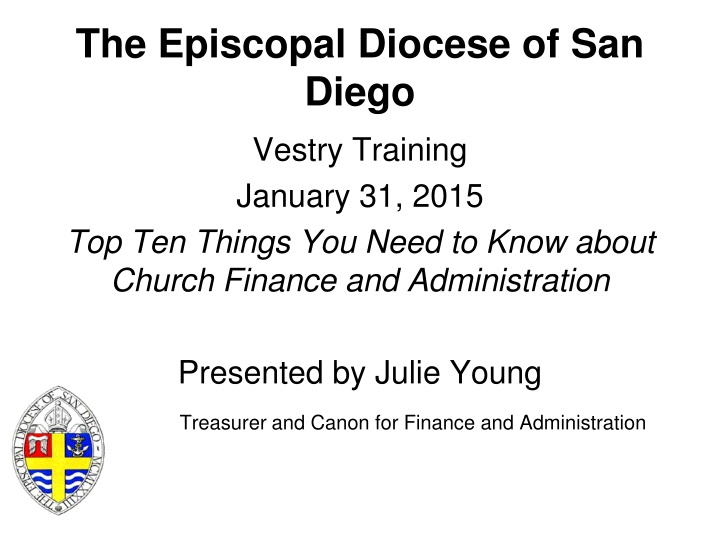

![(❤Read⚡) [✔PDF✔] The Best Travel Guide - San Diego: A Cicerone’s View of To](/thumb/68088/read-pdf-the-best-travel-guide-san-diego-a-cicerone-s-view-of-to.jpg)


